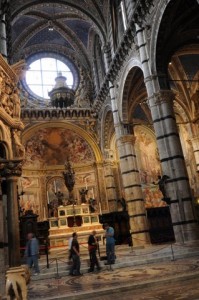Neuroscience and Sacred Space
March 20th, 2012Several years ago I read an article from the American Institute of Architects Journal about the connection between our brain and our experience of sacred space. Neuroscience, the study of the mind and brain, is a budding field and has interesting design implications for architects. While we often have an intuitive sense of when a place feels sacred, neuroscience is trying to explain why. Here are a few tidbits I found interesting in the article.
It seems we are “hard-wired” to experience sacredness according to Dr. Andrew Newburg who has conducted studies of people who are skilled at meditation. Another interesting observation is that our eyes typically track across a horizontal path. There is some evidence that indicates if we change this pattern and move our eyes upward in a vertical path more than a few feet above our head we experience a sense of awe. This might explain why cathedrals are associated with sacred space as well as soaring mountains.
Our mind records thousands of bits of information from our experiences in the course of a lifetime. If we grow up in a spiritual household we learn to associate certain artifacts, such as a cross or the sound of a drum beat, with sacredness. If we are in a new setting and our brain recognizes one of these artifacts or sounds as sacred, the larger context where we find ourselves will also feel sacred.


No Responses to “Neuroscience and Sacred Space”